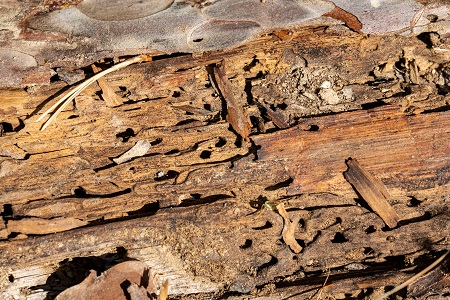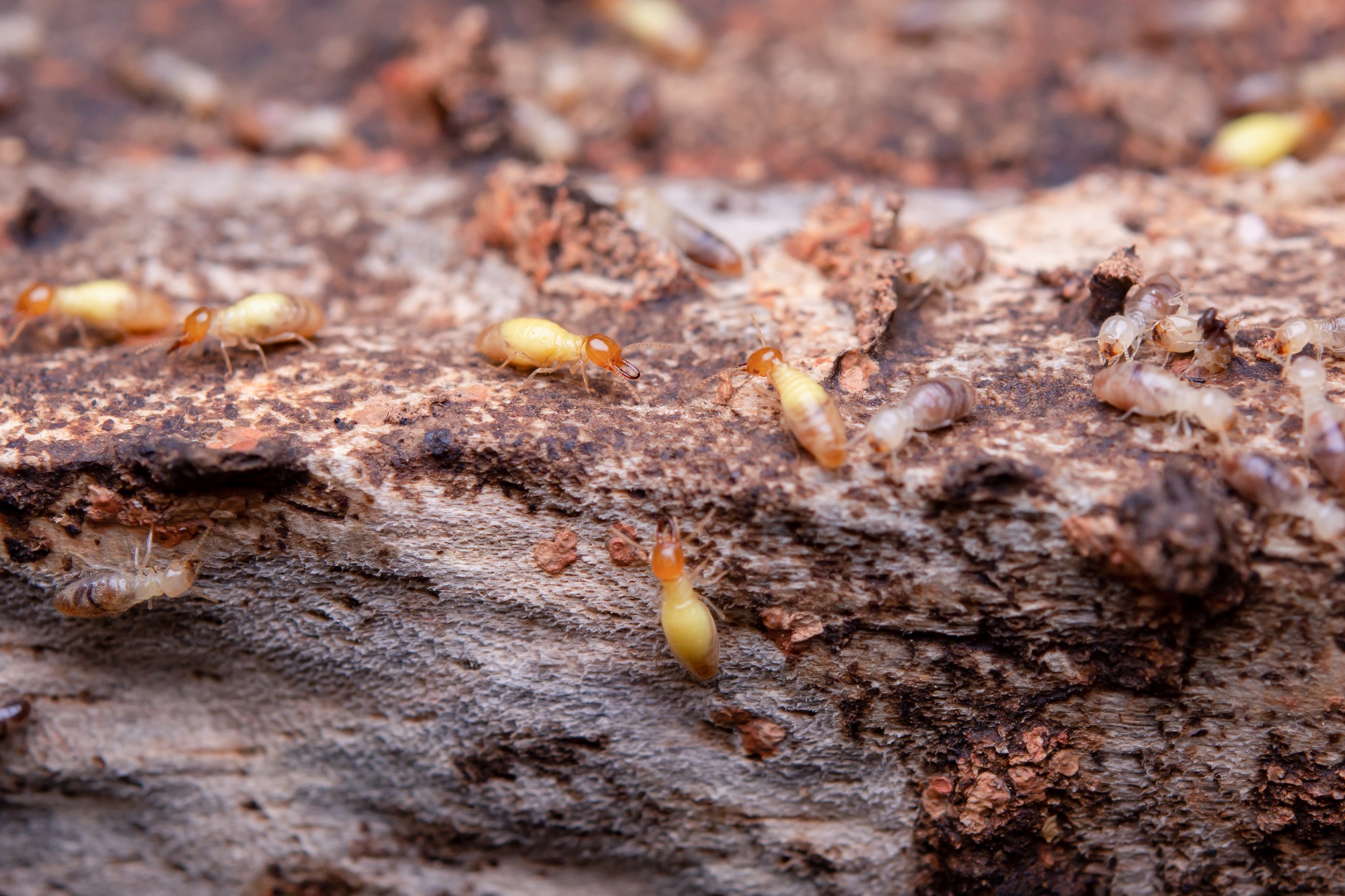Did you know that termites cause more than $5 billion in property damage every year in the United States alone? That’s a pretty heavy toll, and even though you’ve just had your home treated, it’s crucial to know what happens next.
You might think it’s all over, but the truth is, the real work has just begun. There’s a whole lot more to termite treatment than just getting rid of the pests, and the aftermath can be just as important as the treatment itself.
Let’s dig a little deeper into what you should expect after termite treatment and why it matters to you.
Returning Home Post-Treatment


When you return home after termite treatment, it’s essential to conduct a thorough inspection and ensure that your pets, plants, and fish are safe to return and that all sealed food and medicine are opened. There are several components to consider when returning home post-treatment.
Firstly, you’ll want to plug in appliances and arrange for gas restoration. Close windows and drawers to prevent other pests from entering your home.
Next, prepare for potential signs of termite resurgence. Dead termites can still be found, especially close to previously infested areas. Don’t panic if you spot termite droppings – this is normal after treatment. Simply wipe the affected areas and repaint them if necessary.
Lastly, ongoing vigilance is crucial. Understand the importance of treating the entire property for termite prevention. Regular inspections can provide peace of mind and help prevent future infestations. If you notice any signs of termite activity, don’t hesitate to consult professional services for further treatment. Remember, a single termite treatment is effective, but regular maintenance is the key to keeping your home termite-free.
Observing Increased Termite Activity
While maintaining vigilance is crucial to detecting early signs of resurgence, you might also notice an increase in termite activity after treatment. This surge, far from indicative of treatment failure, often signals a disrupted termite colony scrambling to recover. Swarming termites, particularly flying reproductives, are common post-treatment sightings and are part of the natural response to termite fumigation.
After termite treatment, you must be prepared for this increased activity. It’s essential not to mistake this for a new termite infestation. Instead, understand that the treatment has likely unsettled the colony, leading to increased visibility of termites. The duration for complete termite elimination can vary, influenced by factors like the level of infestation and the effectiveness of the treatment.
However, if you’re worried about observing increased termite activity post-treatment, don’t hesitate to reach out to pest control experts. Their guidance can reassure you about the process and offer necessary interventions if needed. Remember, complete eradication of the termite colony is the goal, and increased activity might just be a sign that you’re on the right track.
Ensuring Full Property Treatment
To ensure full property treatment after pesky termite eradication, it’s crucial that you check all areas, including outbuildings and trees, for any signs of lingering termites. Even if your home has undergone a comprehensive termite treatment, there’s always a chance that some termites may have survived or new ones may have infested your property. Therefore, ensuring full property treatment is key to getting completely rid of termites.
Here are some steps to take:
Regularly inspect your property: Look for signs of termite activity, such as mud tubes, damaged wood, and droppings.
Schedule follow-up treatments: Regardless of the initial success, ongoing termite treatments are necessary to prevent re-infestation.
Hire a professional pest control company: They have the expertise to conduct thorough inspections and treatments.
Adopt preventive measures: This includes sealing potential entry points, maintaining a clean property, and removing dead wood and other termite attractions.
Evaluating Termite Fumigation Effectiveness
Assessing the effectiveness of termite fumigation is a critical step you’ll need to take in the weeks following the treatment. You may notice some residual termite activity for up to four weeks post-treatment, including swarming. Don’t be alarmed – this is normal and doesn’t necessarily signal treatment failure. Those termites are likely to die off without being able to escape your home.
Regularly check for termite droppings, but remember that finding them isn’t an indicator of treatment failure either. It’s also essential to be aware that there may be a temporary increase in pest activity, especially ants attracted to dead termites.
Evaluating termite fumigation effectiveness can take time. Full termite elimination may take one to two months, and complete colony eradication could take even longer. It’s important to understand that the treatment effectively eliminates termites in your home but doesn’t provide permanent protection. Regular maintenance and ongoing treatments are necessary to prevent a re-infestation. Professional pest control services can increase the likelihood of successful long-term termite control. Be patient and persistent in your efforts to ensure the effectiveness of the termite treatment.
Post-Treatment Precautions and Measures
After your home has been treated for termites, it’s crucial that you remain vigilant, monitoring for any potential termite activity, such as swarming or droppings, and seeking termite technician advice if necessary. While termite treatment is effective, it doesn’t offer a permanent pest control solution. You need to take post-treatment precautions and measures to prevent re-infestation.
Here are some steps you should consider:
- Continuously monitor for signs of termite activity. If you notice anything suspicious, don’t hesitate to call us for professional guidance.
- Adopt preventive measures like sealing wood surfaces, removing dead wood, and avoiding mulch near your house.
- Arrange for thorough cleaning post-treatment to ensure the removal of any residual chemicals.
- Understand that termite treatments aren’t permanent pest control solutions. Regular maintenance and preventive measures are necessary for long-term protection.
What to expect after termite treatment includes a period where complete termite elimination can take some time, especially in cases of severe infestation. But with vigilant observation and preventive measures, you can safeguard your home against future termite invasions.
Hire Anteater Exterminating for Termite Treatment Services
When dealing with a termite infestation, it’s crucial to consider hiring Anteater Exterminating, a team of knowledgeable, trained, and professional exterminators. Anteater Exterminating offers comprehensive termite control services that ensure all termites are eradicated, and future infestations are prevented. Weather you have subterranean termites or drywood termites, we got you.
Here’s what you can expect when you hire Anteater Exterminating:
- A thorough, affordable termite inspection of your property to gauge the extent of the pest infestation.
- A customized treatment plan based on the inspection results.
- Regular monitoring to ensure the termite colony is completely eliminated.
- Preventative measures to ward off future destructive termite infestations.
You might wonder what to expect after treatment for termites. Typically, the termites start dying off soon after the treatment is applied. However, it’s important to remember that one treatment might not be enough to completely eradicate the infestation. Regular follow-ups and ongoing treatments are necessary to ensure all termites are eliminated, and your property stays termite-free.
Contact us today for a termite inspection today! We provide excellent customer service.
Visit our About Us page for more information about our pest control company.

